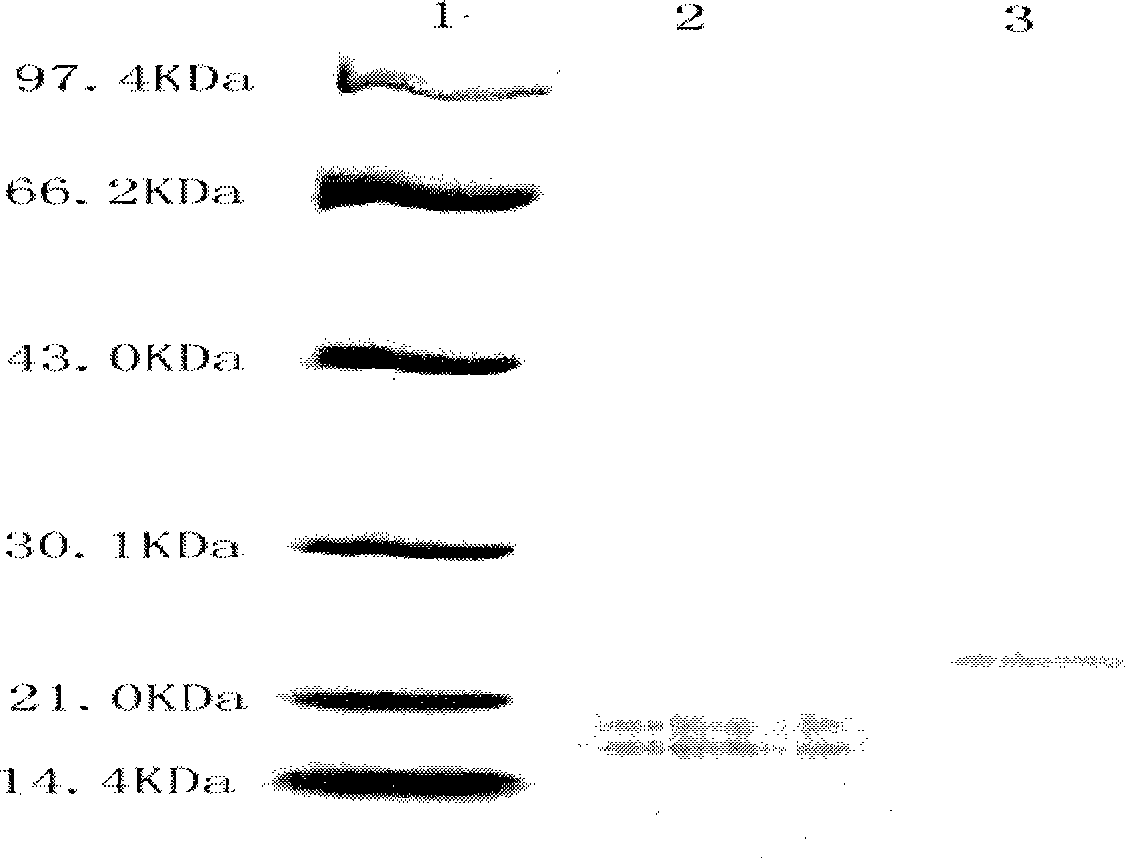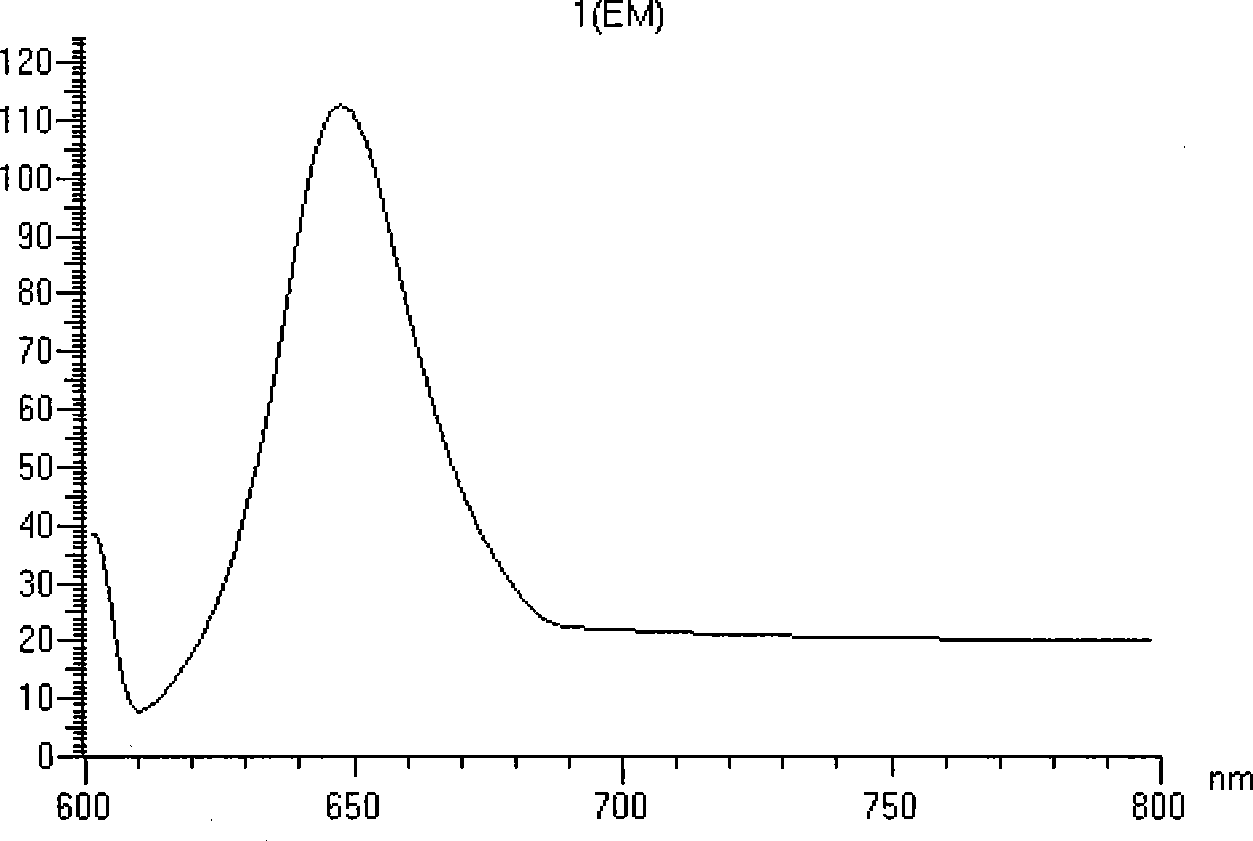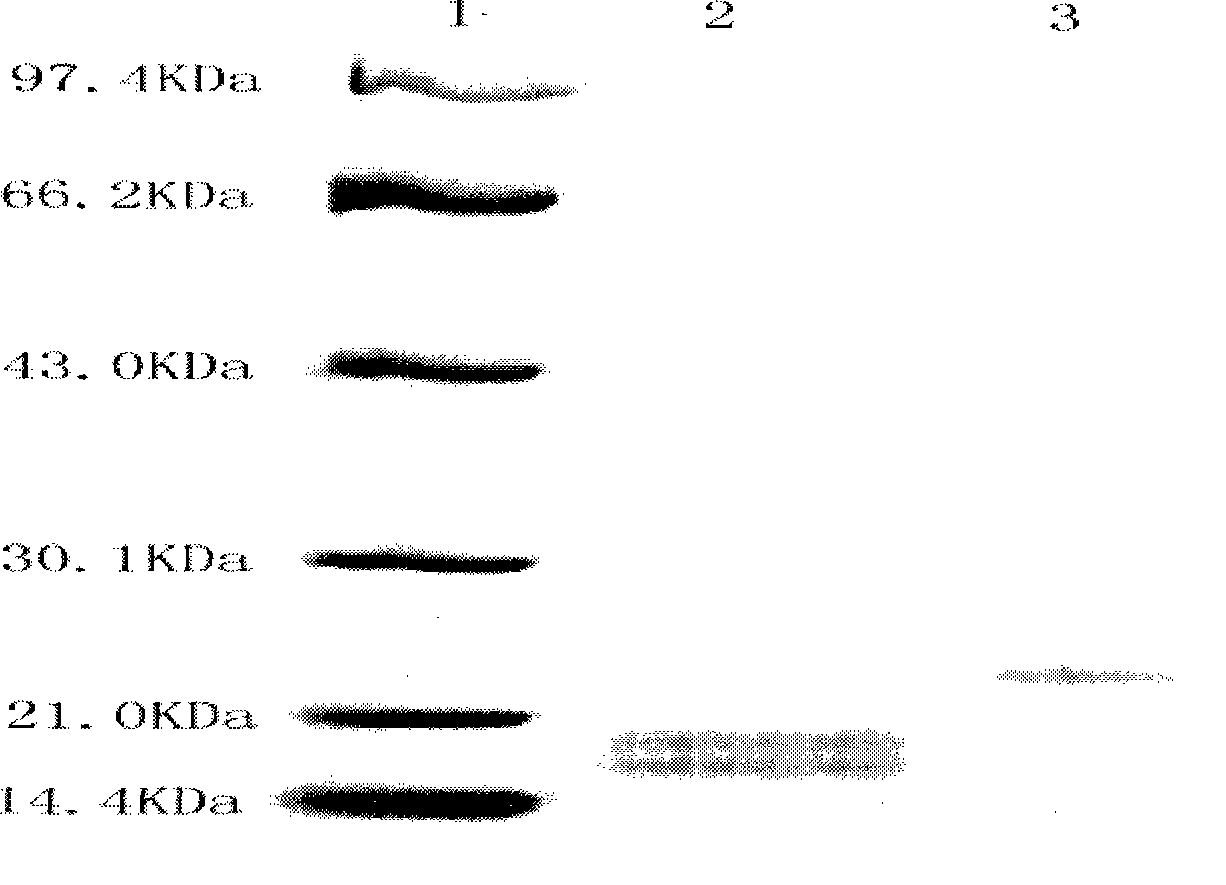Preparation of allophycocyanin fluorescent protein
A technology of allophycocyanin and phycocyanin, applied in the fields of botanical equipment and methods, microorganism-based methods, biochemical equipment and methods, etc., can solve the problems of unstable strains and complicated construction process, and achieve easy separation. Purification, simple purification method, easy cross-linking and cell entry effect
- Summary
- Abstract
- Description
- Claims
- Application Information
AI Technical Summary
Benefits of technology
Problems solved by technology
Method used
Image
Examples
Embodiment 1
[0032] (1) It can be found from Genebank that the complete sequence of the algae Synechocystis sp. PCC6803 has been determined. The number of Synechocystis sp.PCC6803 in Genebank is: BA000022, and the desired gene can be found from the complete sequence. According to the apcA, hox1, and pcyA gene sequences of Synechocystis sp. PCC6803 found in Genebank, primers were designed (the primers and reaction conditions used are shown in the table below), and the corresponding genes were cloned by PCR using Genomic DNA of Synechocystis sp. PCC6803 as a template.
[0033]
[0034]
[0035] (2) Allophycocyanin apoprotein apcA in Synechocystis sp.PCC6803 1 Gene cloned in Novagen's pCDFDuet TM In the -1 vector, the step of inserting the gene into the vector is: apcA obtained by PCR amplification in step 1) 1 The gene fragment was electrophoresed (120V, 40 minutes), and apcA was recovered 1 The PCR product fragment; the resulting fragment was double-digested with the designed restr...
Embodiment 2
[0044] (1) It can be found from Genebank that the complete sequence of the algal species Synechocystis sp. PCC6803 has been determined. The number of Anabaena sp.Synechocystis sp.PCC6803 in Genebank is: BA000022, and the required gene can be found from the complete sequence. According to the apcA, hox1, and pcyA gene sequences of Synechocystis sp. PCC6803 found in Genebank, primers were designed (the primers and reaction conditions used are shown in the table below), and the corresponding genes were cloned by PCR using Anabaena sp. PCC7120 genomic DNA as a template.
[0045]
[0046]
[0047] (2) Allophycocyanin class apoprotein gene apcA in Anabaena sp.PCC7120 2 Cloned in pCDFDuet from Novagen TM In the -1 vector, the step of inserting the gene into the vector is: apcA obtained by PCR amplification in the previous step 2 The gene fragment was electrophoresed (120V, 40 minutes), and apcA was recovered 2 The fragment of the PCR product; the resulting fragment was doubl...
Embodiment 3
[0055] (1) It can be found from Genebank that the complete sequence of the algal species Synechocystis sp. PCC6803 has been determined. The number of Anabaena sp.Synechocystis sp.PCC6803 in Genebank is: BA000022, and the required gene can be found from the complete sequence. According to the apcA, hox1, and pcyA gene sequences of Synechocystis sp.PCC6803 found in Genebank, primers were designed (the primers and reaction conditions used are as follows), and unsequenced Chroococcales (Chroococcales) algae genomic DNA was used as a template for PCR Clone the corresponding gene.
[0056]
[0057]
[0058] (2) Allophycocyanins apoprotein gene apcA from Chroococcales algae 3 Cloned in pCDFDuet from Novagen TM In the -1 vector, the step of inserting the gene into the vector is: apcA obtained by PCR amplification in the previous step 3 The gene fragment was electrophoresed (120V, 40 minutes), and apcA was recovered 3 The fragment of the PCR product; the resulting fragment wa...
PUM
 Login to View More
Login to View More Abstract
Description
Claims
Application Information
 Login to View More
Login to View More - R&D
- Intellectual Property
- Life Sciences
- Materials
- Tech Scout
- Unparalleled Data Quality
- Higher Quality Content
- 60% Fewer Hallucinations
Browse by: Latest US Patents, China's latest patents, Technical Efficacy Thesaurus, Application Domain, Technology Topic, Popular Technical Reports.
© 2025 PatSnap. All rights reserved.Legal|Privacy policy|Modern Slavery Act Transparency Statement|Sitemap|About US| Contact US: help@patsnap.com



